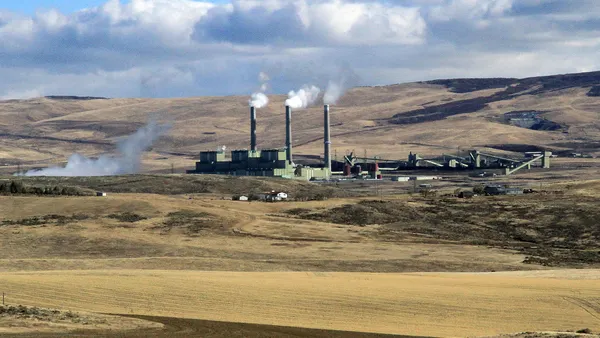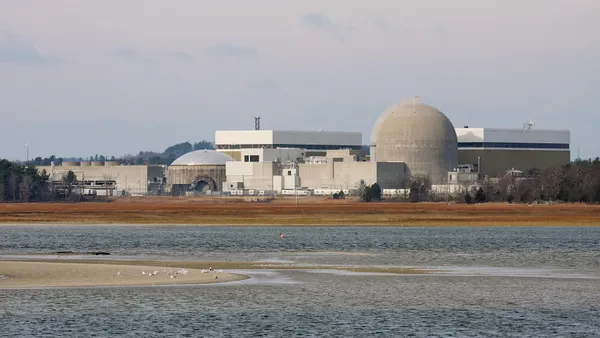UPDATE: Nov. 20, 2020: The California Public Utilities Commission (CPUC) voted on Thursday to open a rulemaking to ensure power grid reliability during possible extreme weather events in summer 2021.
In a statement, CPUC Commissioner Liane Randolph said the proceeding will focus on measures that can be implemented as soon as possible, and is "just one piece of the ongoing work we are doing in tandem with the California Energy Commission and the California Independent System Operator to ensure reliability both next year and in the future."
Dive Brief:
- The California Public Utilities Commission (CPUC) is set to vote this week on opening a rulemaking to make temporary changes to its demand response, resource adequacy and other processes to prevent repeating the rolling blackouts of this past August.
- The changes are intended to increase energy supply and decrease demand during the summer of 2021. The rulemaking, if approved by commissioners at an agency meeting on Thursday, would look into a series of measures like increasing month-ahead procurement requirements for load-serving entities, suspending restrictions on fossil fuel back-up generators, as well as a new demand response programs.
- While it's good that the commission is moving quickly to address potential capacity shortfalls next summer, regulators are facing an extremely tight timeline, Seth Hilton, partner at Stoel Rives said — the order instituting rulemaking anticipates having a proposed decision out by next April. "That's not a lot of time before we hit the potentially challenging summer season," Hilton noted.
Dive Insight:
The California Independent System Operator (CAISO) initiated rolling blackouts that affected hundreds of thousands of customers this summer after a record-breaking heatwave swept across the Western U.S., leading to a spike in energy demand. The operator simultaneously faced other issues including thermal and natural gas plants becoming less efficient or going offline, declining production of behind-the-meter renewables and large-scale solar and the lack of available imports, the CPUC noted in its order.
In October, the CPUC, CAISO and California Energy Commission submitted a preliminary analysis to Gov. Gavin Newsom looking into the factors that caused the blackouts. In it, they noted that while the blackouts stemmed from a combination of extraordinary events, "it is our responsibility and intent to plan for such events, which are becoming increasingly common in a world rapidly being impacted by climate change."
The report also outlined measures that regulators could take to prevent reliability issues from occurring again in 2021. For the CPUC, that included potentially updating reliability planning targets to account for extreme weather and California's changing energy mix, as well as quickly developing additional resources that can come online by the summer of 2021.
In addition to possibly tweaking resource adequacy targets by increasing month-ahead requirements, the new rulemaking would consider whether specific resources can be tagged to ensure they are not exported during reliability events. Regulators would also consider instructing investor-owned utilities to develop new resources that could come online next year, as well as procure more capacity from additional resources.
Other possible measures include equipping existing generators with efficiency upgrades. The CPUC anticipates that some of the measures introduced by the rulemaking will be temporary, while others might extend beyond 2021.
Although the order instituting rulemaking lists several options, "I think at base really what we need next summer is more capacity," Hilton said. "Nibbling around the margins of other issues isn't going to solve that problem."
There's some low-hanging fruit that the commission can look at, according to Hilton — for instance, demand response measures which were a key focus in the preliminary root cause analysis last month and also played a critical role in preventing blackouts during other days in August when the grid was challenged. Energy storage is also something that California has been able to put into place really quickly in the past.
"But otherwise, it takes a while to get any generation project sited in California and I don't know that there's a lot of generation available that's not contracted for that's ready to go," Hilton said.
And the CPUC's intention to evaluate parameters for suspending restrictions on fossil fuel back-up generators will not be an easily implementable solution, Hilton warned.
"There's been a significant resistance to using those types of resources due to concerns about climate change… [there are] a lot of stakeholders that are concerned about doing something like that."













